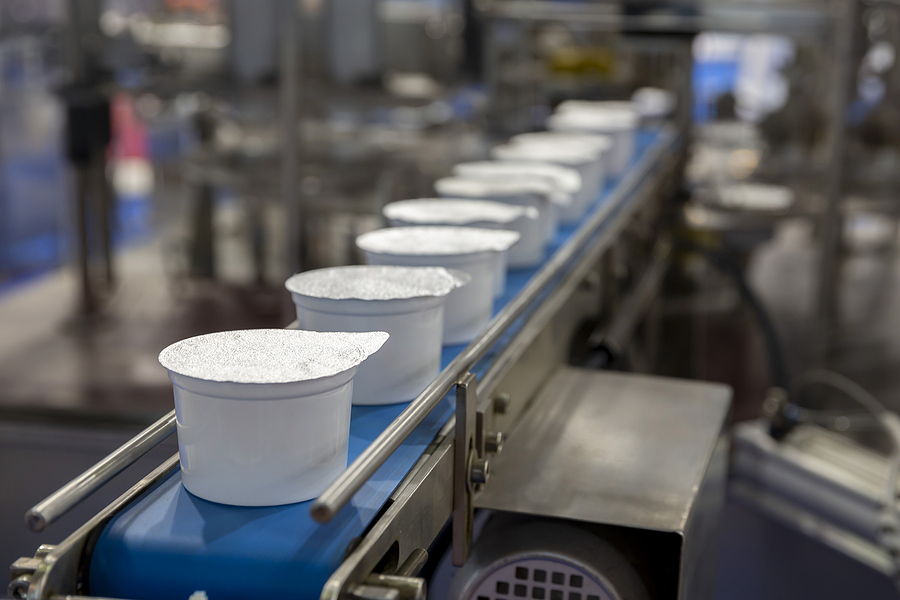SPONSORED CONTENT
By SafetyChain
Food Manufacturing facilities use Overall Equipment Effectiveness as the go-to metric for identifying losses and benchmarking progress towards improving the performance of their throughput. It’s used to identify the percentage of manufacturing time that is truly productive. Click here for a quick infographic of how to calculate OEE.
Correctly measuring overall equipment effectiveness (OEE) in a food manufacturing facility delivers a number of key benefits. By adding sensors to capture run time, down time, and cycle times, OEE allows you to increase production line availability, performance, and quality. The focus of this article is to understand why it’s so valuable to the food industry in particular.
Meeting the demand of food manufacturing
While the practices like lean manufacturing led food manufacturers through the 1970s and the following decades, the digital age has introduced opportunities for more effective monitoring of key performance indicators (KPIs). Past methodologies typically homed in on a single machine or process and used historical trends to track improvement. Plus, most plants only measured one or two attributes, like weight in pounds or cases per hour and overall downtime. Nothing was calculated for loss of product (Quality) or productivity for an entire line or whole plant. Now, OEE food manufacturing software combines sensor data and software to track performance in real time across many different machines. By unlocking insights into what’s going on with production lines, OEE software gives manufacturers the power to better understand – and thus improve – their systems.
OEE for the food industry: Four outcomes
1. Tracking critical performance metrics
Tracking just a couple of KPIs with manual processes is a significant challenge for manufacturers. By using OEE software, you can see exactly where performance is excelling, lagging, or simply staying consistent. But for the plant with several lines, and the need to get insight at the batch level, point solutions will fail miserably. OEE for the food industry should include these particular scenarios. While the KPIs you choose to track should depend on your specific needs, goals, and company strategy, here are a few of the most important KPI analytics for food manufacturers to assess:
- Performance: Actual production speed versus optimal production speed
- Availability: Actual run time versus total operational time
- Quality: Good products versus total product output
- Yield: Number of good units versus those that need rework
By consistently collecting and analyzing data from all of your sensors, OEE software enables you to track these KPIs as well as any others. OEE itself can even be used as a KPI, offering a comprehensive overview of a plant’s effectiveness by consolidating quality, performance, and availability metrics into one formula, especially when comparing across multiple facilities.
2. Adjusting in real time
Food manufacturers face unique constraints. Materials can’t always be reworked, and factors such as expiration dates make the need for timely resolutions especially important when there are roadblocks. Real-time views of a line are therefore necessary for prompt corrective actions on the batches currently in production. It also reduces the risk of a huge raw material dump. Let’s face it, there are some products that cannot be re-worked.
The reason OEE software is so valuable to the food industry is that it doesn’t just provide you with the data you need to make better decisions; it can also alert you of issues happening in real time so that you can react quickly and mitigate the impact they have on your production. The results are more quality-driven operations, reduced rework, more on-time shipments, and increased customer satisfaction.
3. Increasing equipment performance
In addition to improving overall plant performance, OEE software can also help you pinpoint any snags in your process, including equipment failures. With a direct line of sight into sensor data, you can spot inefficiencies caused by issues such as frequent breakdowns of a single machine or component, which could cause downstream issues leading to a major impact on line performance. Using data to effectively schedule downtime for routine maintenance and checks is much more efficient than unplanned downtime due to equipment failure. OEE data, visualized by graphs and charts, can help achieve this. For examples on what this visualization looks like, check out the Production Manager Solution from SafetyChain.
4.) Improving continuously & instilling constructive competition
Finally, OEE software helps food manufacturers improve consistently. Here are just a few of the benefits companies see in their plants by leveraging OEE data:
- Improved productivity: With insights into trends across shifts, lines, and equipment, OEE software allows you to make meaningful changes that can drive the performance of both your employees and your machines.
- Better quality: Tackle quality issues by identifying the problems which could lead to rework and non-conforming material.
- Accelerated throughput: Identify and address interruptions in your processes with OEE software’s reporting features. Use your findings to eliminate repetitive or wasteful work and drive throughput.
- Higher yield: Use OEE software’s root cause analysis and alerts to dive deeper into issues affecting yield.
- Reduced costs: With the ability to improve performance, reduce waste and rework, and accelerate production, watch your plant’s overall costs decrease.
- Healthy competition: Drive better continuous improvement with our nature to compete and outperform. This can be done by looking at a percentage improvement over baseline OR head to head with other facilities. Think about how you can run competitions between lines or facilities!
For a closer look into what OEE software could do for your food manufacturing facility, whether you have one plant with one line, you’re a corporate controller looking at all-important lines in financial statements, or your CoMan or CoPack operations are needing a better way to serve customers, learn more about SafetyChain’s platform features here.
SafetyChain is the #1 Plant Management Platform that improves yield, maximizes productivity, and ensures compliance for food & beverage manufacturers. Trusted by over 1,500 facilities, SafetyChain is the only complete solution for production (OEE & SPC), food safety and quality (QMS), and supplier compliance.
